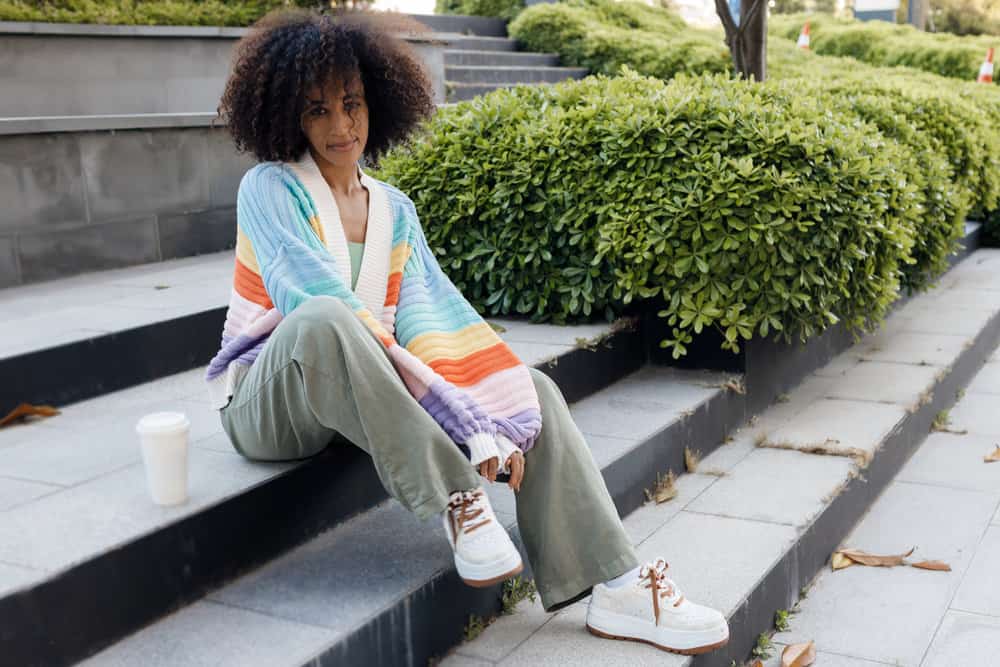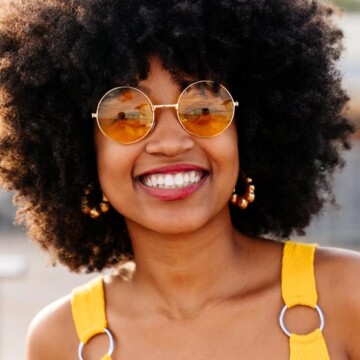
Product build-up is a term that most have heard, but few actually understand. This is unfortunate, given the fact that a good understanding of product build-up is necessary for a fulfilling hair journey.
If you don't know about product build-up, it's okay. It's never too late to get educated. In this article, we'll tell you all you need to know about product build-up, including what it is and what to do about it. Let's get right into it!
Table of Contents
What Is Product Build-Up?
Product build-up refers to when residue from your hair care products accumulates on your hair and scalp. It's not the same as sebum build-up or dandruff flakes. This type of build-up stems from the added product.
Most haircare products can cause build-up over time, but some are more likely to cause build-up than others (more on that later). Anyone can develop product build-up, regardless of hair type. If you use hair care products, you could develop product build-up.

How to Know if You Have Product Build-Up
Product build-up is super common, but just because you think you have it doesn't mean it's true. Depending on the products you use, the build-up may be visible in the form of white dots or a dusty cast.
But there are cases when product build-up isn't visible to the naked eye. In these cases, you'll have to look at other hair characteristics to determine what's going on.
Here are some other signs of product build-up you may not have known about:
- Your hair looks duller as time goes on, even after shampooing and moisturizing it. It's the build-up that masks the hair's natural luster.
- Your scalp is irritated. When build-up sits on your scalp for long enough, the ingredients in the products could begin to irritate your scalp. Most products aren't formulated to sit on your hair indefinitely, and when you have product build-up, the remnants of these products are never truly washed out. You may experience a range of scalp irritation symptoms, including itching, redness, swelling, and bumps.
- Hair dryness and breakage. If you have product build-up and don't take care of it in time, the build-up will prevent moisture from getting to your hair. As a result, people with product build-up often find that their hair is dry. It may stay dry no matter how much you try to moisturize it. Dry hair is more prone to damage and breakage than moisturized hair.
- A feeling that something is on your hair. When you have product build-up, a lot of the time, you may feel like there's something coating your hair. This is a direct result of the leftover product sitting on your strands. In the same way, you may feel like there's something on your scalp even after washing your hair and scrubbing your scalp.
If you notice any of the above things, you might be dealing with product build-up.

Do All Products Cause Build-Up?
Not every product causes build-up. Some products are water-soluble and will wash out of your hair easily during your normal wash day. Products that contain water-insoluble ingredients can be more difficult to wash out later.
And with the invention and growing popularity of gentle sulfate-free cleansers, more and more people are finding that their hair doesn't get squeaky clean and residues get left behind.
Products with the following ingredients are more likely than others to result in product build-up:
- Non-water-soluble silicones, like Cyclomethicone, dimethicone, and dimethiconol
- Wax
- Petrolatum
- Butters
- Heavy oils and butters

What to Do About Product Build-Up
Many who get product build-up panic at the realization. But the great thing about product build-up is that it's super easy to resolve. The one thing you'll need to get your hands on is a clarifying shampoo.
If you haven't heard of clarifying shampoo, it's a specialized shampoo used for deep cleansing. It contains a higher concentration of cleansers than the average shampoo, which gives it its enhanced cleansing power. It's strong enough to remove even severe product build-up.

How to Eliminate Build-up with Clarifying Shampoo
Now that you understand what clarifying shampoo is and how it can help you kiss product build-up goodbye, you're ready to get down to business. To get rid of product build-up with clarifying shampoo, you'll follow the below steps to the letter:
- Get into the shower and wet your hair down. You'll want to ensure that all your strands are drenched. Any hair strands you miss will not get a good cleansing.
- Section out your hair. Use 2 to 4 sections and secure each one with a rubber band or elastic to make the cleansing process easier and ensure a more effective cleansing session overall.
- Dispense some clarifying shampoo into your hands and rub them together a bit.
- Choose a section of hair and apply some clarifying shampoo to it.
- Take a minute or two to scrub your scalp with the pads of your fingers, then move the shampoo down the length of your strands with your hands. Massage the shampoo into your hair.
- Wait for a few minutes while the clarifying shampoo does its job.
- Rinse the shampoo out of your hair and follow it up with a conditioner or deep conditioner. Choose the rinse-out conditioner if your hair isn't usually dry or crunchy. If you suffer from chronically dry hair, you'll want to deep condition your hair afterward. The clarifying shampoo may leave your hair drier than normal.

How Often to Clarify the Hair
Whether you like the idea of clarifying your hair or not, there's no question that it's necessary for most. To keep the build-up away, we recommend using it once a month.
But if you notice the signs of build-up with monthly clarifying sessions, you may want to amp up your clarifying frequency to a couple of times per month or even once per week. Most people will be able to get away with monthly sessions, though.
The type of products you use (and how often you use them) will greatly affect how many times you'll need to clarify your hair per month.
Alternative Treatment for Product Build-Up
You don't have to use a clarifying shampoo to remove build-up. If you were looking for something you can make at home rather than buy at the store, these remedies will be interesting to you:

Baking Soda and Shampoo
You can get rid of build-up by combining your regular shampoo with baking soda. Baking soda has natural cleansing abilities and an abrasive quality that lends itself well to scrubbing away build-up.
To try it, combine 2 tablespoons of baking soda with 2 ounces of shampoo and mix them together in a small bowl. Wash your hair with it as you would with normal shampoo, and then rinse thoroughly.
ACV Rinse
ACV (or apple cider vinegar) has clarifying qualities that make it an amazing cleanser. To get the benefits of this ingredient, combine a cup of apple cider vinegar with a cup of warm water and apply the mixture to your hair after your regular shampoo.
You'll then leave the mixture on your hair for a few minutes so it can do its magic. Once the time is up, you'll rinse your hair thoroughly.
Clarifying shampoo is, by far, the easiest way to get rid of product build-up. It was designed for this purpose and will get you immediate results in most cases.
But if you'd like, you can try one of the other methods above. Keep in mind that it could take several cleansing sessions to achieve full removal of the build-up, so you'll need to be patient.
How Do You Get Rid of Product Build-up in Curly Hair?
Use a clarifying shampoo once a month to remove product build-up from the hair and scalp for curly hair. You can also use an apple cider vinegar (ACV) rinse. Consider reducing the amount of styling products you use. It's important to use the right amount of product for your hair type and length to avoid product build-up.
How Do You Get Rid of Product Build-up in Hair Extensions?
Product build-up can also be a problem for hair extensions, especially if they are synthetic. Use a sulfate-free shampoo to wash your hair extensions regularly, and use a clarifying shampoo once a month to remove any build-up that may have accumulated. Avoid using too many styling products on your extensions. Using too much product can lead to build-up.
What Causes Product Build-up in Hair?
Using too much styling product leads to build-up because it's difficult for your hair to absorb it all. Additionally, using the wrong type of product for your hair type can lead to build-up. For example, using a heavy, oil-based product on fine hair weighs it down and causes build-up. Also, not washing your hair frequently enough can lead to build-up.
- How to Get Hairspray Out of Hair
- How to Detox Dreads
- Baking Soda Hair Detox
- How Often Can I Use Bentonite Clay on My Hair
So, there you have it–a quick, comprehensive rundown on build-up, what it is, and what to do about it. We hope you found the information in this article helpful and wish you the best as you fight the build-up!




